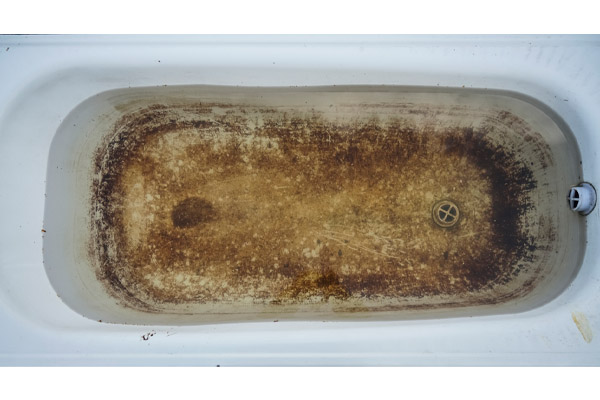On this page underneath you will discover a bunch of decent help and advice around Why is Sewage Backing Up Into My Bathtub?.

Sewer backup in the bathtub can be an upsetting and unsanitary trouble for any kind of home owner. Not only is it troublesome, yet it additionally poses serious health and wellness dangers and suggests underlying issues with the plumbing system. Understanding why sewage is coming up with the bath tub is vital for taking suitable action to deal with the trouble effectively.
Introduction to the Issue
Typical Reasons for Sewer Back-up
Blockages in the Drain Line
One of the most common root causes of sewage back-up is a clog in the sewer line. This can take place as a result of the accumulation of particles, oil, or foreign objects in the pipes, avoiding proper flow and triggering sewer to support into your tub.
Tree Origin Intrusion
Tree origins looking for moisture and nutrients can infiltrate sewage system lines through small fractures or joints. Over time, these roots can grow and expand, triggering considerable damage to the pipes and bring about sewer back-up issues.
Understanding the Issue
When sewer starts backing up into the bathtub, it's a clear sign of a trouble with the drainage system. The wastewater that needs to be moving away from your home is instead locating its back right into your space, which can cause substantial damage and health hazards.
Possible Reasons
Several factors can contribute to sewer back-up in the tub. From blockages in the sewage system line to issues with the plumbing framework, determining the source is essential for finding a service.
Aging Framework
Older homes may have obsoleted plumbing systems that are more vulnerable to rust, fractures, and damage. As pipelines age, they end up being much more susceptible to leaks and obstructions, increasing the possibility of sewage back-up events.
Heavy Rainfall or Flooding
During durations of heavy rainfall or flooding, the drain system might end up being overloaded with excess water, triggering back-ups and overflows. This can cause sewage supporting right into bathtubs and various other components inside the home.
Signs of Sewer Backup
Foul Odors
Unpleasant odors emanating from drains or components, particularly in the shower room, may suggest sewage backup issues. These odors are typically strong and consistent, signaling a trouble that needs prompt focus.
Slow Draining Fixtures
Bathtubs, sinks, and commodes that drain slowly or not whatsoever could be experiencing sewer backup. If multiple fixtures are influenced all at once, it's likely that the problem originates from a common point, such as the major sewage system line.
Gurgling Noises
Weird gurgling or gurgling sounds coming from drains when water is running somewhere else in the house are a sign of air trapped in the plumbing system. This air build-up can result from sewage back-up and should be explored without delay.
Health And Wellness Risks Related To Sewer Backup
Contamination of Supply Of Water
Sewage back-up can infect the water supply in your home, posing a severe health and wellness danger to you and your household. Direct exposure to infected water can cause intestinal concerns, skin infections, and other health problems.
Mold and mildew Development
Dampness from sewage backup can produce ideal problems for mold development in your house. Mold and mildew spores can intensify respiratory troubles and trigger allergic reactions in sensitive people, making punctual clean-up necessary.
Spread of Disease
Sewer consists of hazardous microorganisms, viruses, and parasites that can create a series of conditions, including hepatitis, cholera, and gastroenteritis. Entering contact with sewer or infected surfaces places you in jeopardy of infection.
Cleaning Up After Sewage Backup
Disinfection Procedures
Extensively sanitize and disinfect impacted areas after sewage backup to remove dangerous germs and avoid mold and mildew growth. Use appropriate cleaning items and protective gear to ensure safe and reliable clean-up.
Repair of Influenced Areas
Fix any type of damage to flooring, wall surfaces, or components caused by sewer back-up. Depending upon the degree of the damage, you may need to change carpets, drywall, or various other materials to recover your home to its pre-loss problem.
Immediate Actions to Take
Shutting Off Supply Of Water
In the event of sewage backup, it's essential to turn off the water system to avoid more contamination and damage. Find the major water shutoff valve in your house and closed it off until the concern can be fixed.
Speaking To a Specialist Plumber
Dealing with sewer back-up is not a do it yourself work. Contact an accredited plumber with experience in taking care of sewage-related problems to evaluate the situation and do necessary repairs or cleanings.
Avoiding Contact with Contaminated Water
Until the sewer back-up is solved, avoid contact with infected water to avoid the spread of germs and pathogens. Use protective gear if you have to be in the afflicted area and clean your hands completely later.
Preventive Measures
Normal Maintenance of Drain Lines
Schedule normal evaluations and maintenance of your sewer lines to determine and attend to prospective concerns before they intensify right into significant issues. This can include clearing out debris, inspecting for tree root invasion, and repairing any kind of damaged pipes.
Installing Backwater Shutoffs
Consider setting up backwater shutoffs in your plumbing system to prevent sewer from flowing back into your home throughout periods of heavy rainfall or flooding. These shutoffs instantly close when water starts backing up, safeguarding your home from contamination.
Correct Disposal of Household Waste
Stay clear of flushing anything other than toilet paper and human waste down the commode to stop obstructions and obstructions in the drain line. Dispose of oil, oil, and various other household chemicals appropriately to minimize the threat of plumbing problems.
Why is Sewage Coming Up Through Your Bathtub?
Reasons You May Have Sewage in Your Bathtub
All the drains in your home lead down different pipes to get to the main sewer line. If you’re seeing sewage in the bathtub, the problem is that the main sewer line is clogged up, which is causing the water running through other drains to be pushed back into other pipes. The problem isn’t the bathtub, but the main line. The sewer line can get backed up by anything that goes down the drain, from food waste, hair and soap particles to jewelry or children’s toys. Tree branches or dirt can also impact the sewer line. If you’re seeing sewage in the bathtub, you have a big problem that usually needs a professional plumber. Trying to fix this problem without the right tools or knowledge can lead to bigger plumbing problems.
Fixing a Clogged Sewage Line
Although you shouldn’t try to fix the clogged sewer line on your own, you may be able to mitigate the issue until you can get a plumber to your home. A plunger isn’t going to help, because it won’t be able to reach the sewage drain to unblock the problem.
Turn Off Water
Find the main shutoff valve to your home to turn off the water. This prevents more water from going down the drain which is only going to flow back into your bathtub.
Snake the Toilet and Drain
Start by using a drain pipe snake to clean out the toilet drain. Rotate the snake clockwise when you push the snake down. As you pull it out, the snake should spin counterclockwise. Follow up by snaking out the bathtub drain. If you are successful, both the toilet and shower will drain efficiently. If you’re not successful, you probably have a bigger problem than your tools and experience can manage.
Contact a Professional Plumber
Pros have the tools to find the source of the problem and the experience to manage big blockages without causing more damage to your pipes. It can save you a lot of stress by contacting the professionals sooner rather than later.
Identify the Early Signs of a Clogged Sewage Line
If you’re gearing up for a holiday family gathering or just want to avoid the hassle of a clogged sewage line in your home, make sure you recognize the signs of a clogged sewer line.
- Slow drains are a sign of a sewer line problem.
- Gurgling drains from any drain in your home indicate that you may have an obstruction in the drains.
- If your toilet keeps getting clogged, it might be a problem with the sewer line.
- When you see laundry water or water from the dishwasher in different sinks in the home, it’s an indication that your sewer drain is beginning to get backed up.
These symptoms can often be “fixed” temporarily to get through a day or week before you start seeing the same problem. When it comes to plumbing problems, you want to fix the root of the problem instead of muddling through. The clog will not go away on its own.
https://handymanconnection.com/mississauga/articles/why-is-sewage-coming-up-through-your-bathtub/

I recently found that piece of writing on Why is Sewage Backing Up Into My Bathtub? while doing a search on the search engines. If you enjoyed reading our blog entry plz remember to pass it around. Thank-you for taking the time to read it.
Request Estimate
Comments on “Understanding the Phenomenon of Waste Rising Through the Bathtub”